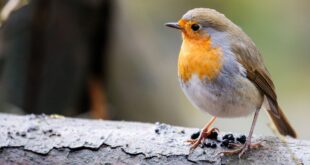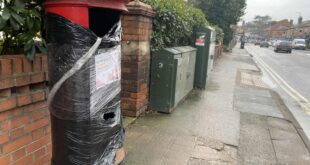The Daily Beast
Forget Scranton, Wilmington Is the Biden City Worth Visiting
This is the latest in our twice-monthly series on underrated destinations, It’s Still a Big World.After months of staying close to home, being a social-distancing Jedi, and not feeling like a travel writer, I finally packed up a rental car, my collection of masks, and a stash of hand-sanitizer to hit the road on a solo trip. After months of dreaming of far flung locales, what would my first destination be? Surprisingly, Wilmington, Delaware.Since President Elect Joe Biden’s victory speech at the Chase Center, Wilmington’s name has filled ledes and chyrons everywhere. In the past, Wilmington was just that mid-sized city off of I-95, the one you pass by on your way to Baltimore or Washington. For many, it has not been a destination—it’s not even the first Wilmington to come up in a Google search. But those I spoke to in Wilmington recognize the apparent counterintuitiveness of saying, “hey, come to Wilmington.” After spending a few days in the city, I agree: get off I-95 and check out Wilmington.My trip was at the invitation of the It’s Time campaign, an effort to get the community back out to support local businesses as part of a pandemic recovery and to show the appeal of Wilmington as a local escape. I hadn’t been to the city since I was a poor student in Philadelphia years ago. Back then, I would swing down to visit the Wilmington adjacent, Longwood Gardens—one of my few luxuries. I’d bring a book on weekends or enjoy the warmth of the conservatory, and the companionship of plant life in the colder months. On occasion, that meant driving into downtown Wilmington, but never much more than that.When I arrived this time, almost every person I met acknowledged Wilmington’s recent history and its struggle with crime and poverty. Owning that story is their strength. Each of them would also insist that Wilmington is a place moving forward, a place for tourism—especially for safer, regional trips during the pandemic—and a great place to live.For almost two decades, Wilmington has worked to breathe fresh life into itself, seeking to keep those historic elements that make it what it is, while also embracing a long needed change. From my vantage point as a visitor, that effort seems to be paying off.The city still has its historic, beautiful gardens and architecture that are mostly the legacy of the ubiquitous Du Pont family, including Winterthur Museum and Gardens, which is 1,000 acres of beautiful land, that is now a museum of American decorative arts, the Hagley Museum and Library, a former site of gunpowder works that is now home to gardens, a museum to American industry, and a research library, and Nemours Estate, 3,000 acres of also stunning garden and architecture. Additionally, within Wilmington’s orbit is the always amazing, 1,000 acres of Longwood Gardens, whose architecture and horticultural art is breathtaking.A lot of cultural memory is bound up in places like these, and are worth your time when visiting, especially come April.Similarly, the beautiful Grand Opera House, recently featured in Wally Koval’s book, Accidentally Wes Anderson, has hosted talent in Wilmington for over 140 years. Built by the Masons, the building’s facade is a painted cast-iron structure with a pediment featuring the Eye of Providence. While in Wilmington, I had a chance to tour the three stages of The Grand: Copeland Hall, The Baby Grand, and The Playhouse. All have their own personalities, but it is the blazing red of Copeland Hall, with its ceiling mural of eight of the nine muses, that captures the imagination.The Grand is also known for its wonderful acoustics, Executive Director Mark Fields tells me. “Country singer Kathy Mattea, says that ‘When you sing in The Grand, The Grand sings with you’,” he adds.But the signs of Wilmington’s efforts to change show up loudly in places like the Riverfront.The Riverfront, which began its revitalization in the late 90s, is now an intersection for the city, its wildlife, and the connecting neighborhoods. Running along the Christina River, the Riverfront is a center of entertainment, restaurants (with outdoor seating), hotels, the Blue Rocks minor league stadium, river taxis, and the multi-purpose events space of the Chase Center, where the President Elect gave his victory speech.This is, essentially, the polar opposite of its former life.Like so many cities built around rivers—Cleveland, for example—those rivers and surrounding marshlands served for decades as dumping sites for industry, pushing away wildlife in favor of the polluted soup of brown fields. Once those industries closed up, they left those spaces unusable and dangerous.Wilmington’s leadership and governors recognized the need to change that and set out to restore the area. The marsh was restored and became the Russell Peterson Wildlife Refuge, a stunning 212 acres of freshwater green space, where you might come to enjoy some fresh air, wildlife, and especially birdwatching. This refuge hosts the DuPont Environmental Education Center, which is worth the visit, though it is also worth noting that DuPont has its own history having to fix its chemical contamination and pollution.Any decent visit to Wilmington, therefore, should include The Riverfront and the appended refuge, but also bring a bike, because you’ll want to hop on and cycle the Jack A. Markell Trail. Beginning from a wide, 2,300-foot wooden boardwalk that rises over the marsh, this well-maintained rail-trail connects neighborhoods from New Castle to the Riverfront and downtown Wilmington. Trails like these not only enable healthy living, but also easier access to employment.And to be honest, if a city doesn’t have bike trails and green spaces, it is not worth my time. A city is really only as great as its environment.But after those green spaces, it is worth venturing downtown to see Wilmington’s restaurant revolution.Nothing represents Wilmington’s transformation like the launch of Le Cavalier at the Green Room—Le Cav, for short. (As this was my first dinner inside a restaurant in months, I may have been a bit overly excited.)“We opened on September 1, and it was pushed back from the original plan,” said Chef Tyler Akin. He is primarily known for his Philadelphia restaurants, Stock and Res Ipsa Cafe, the latter of which closed this month as a victim of the pandemic.Le Cav is connected to the historic Hotel Du Pont, a five-star, luxury hotel that is also known for being the hotel of choice when the Bidens are in town. It also happened to be my temporary home for this trip.Le Cav’s connection to Hotel Du Pont has a long history. The restaurant space was originally The Green Room, a more formal restaurant that was a Wilmington institution, but spent years declining.Now a neo-brasserie, Le Cavalier’s menu is influenced by the flavors of North Africa and Provençe. That influence on the menu is seen in the Gnocchi Parisienne, served with jumbo lump crab, caviar, and lemon beurre blanc, as well as wonderful mediterranean dishes like the Swordfish A La Grecque, with whipped feta and butternut squash tzatziki.There were also significant renovations. Some elements of the Green Room were kept, like its Spanish Chandeliers and oak paneling, but they lost the floor to ceiling draperies to bring in the light, opened outdoor seating, and added a bar.“I think it’s cool,” says Akin, “because it looks pretty timeless.”But it was with the floor that they had their biggest surprise. They expected to find poured concrete under the wall-to-wall carpeting, but what they found was a beautiful mosaic terrazzo. Wherever I went in Wilmington, the story of these floors came up in conversation.“It was like discovering Pompeii!” a Hotel Du Pont clerk told me with a touch of bravado. Le Cav clearly combines the best of both old and new Wilmington.Newer restaurants downtown, like the James Beard semi-finalists, Bardea Food & Drink on Market Street, live to surprise you. Bardea’s atmosphere is lively and I was able to sample a large portion of their menu—modern twists on Italian and Mediterranean dishes from Chef Antimo DiMeo, who was trained at a two-time Michelin Star awarded restaurant on the Amalfi Coast. From Australian tiger prawns served with romesco sauce, coconut, and spruce tip beurre monté to fusilli lunghi with pistachio crema and miracolo di san gennaro, I left satisfied—and also a little comatose.The Wilmington I experienced was not the Wilmington I met years before.“Wilmington, Delaware,” Mayor Michael Purzycki told me, “has always been known as the corporate capital and the chemical capital of the world…. And along with that went a certain kind of stiff-shirtedness…that’s what the city was forever.” But, he insists, they are now “redefining” themselves.“Ultimately the thing that makes a place attractive,” says Purzycki, “especially young people, are bars and restaurants—nightlife’s what gets this whole thing started. Young people live there if you’ve got those things, and the more young people live there, the more these amenities will show up.”Similarly, along with the change in the outdoor life and the nightlife of the city, there is also this move to change the business image of the city from those stiff shirts, mentioned earlier.Co-working spaces like CSC Station, for example, are built in renovated buildings designed to have open spaces and foster professional connections and shared ideas.It was here that I met Patrick Callahan, founder and CEO of CompassRed, Inc, a data company that uses billions of data points and artificial intelligence to predict trends, even for tackling complicated problems like COVID-19.Callahan originally moved out to Silicon Valley from Wilmington to create his company, only to return as a way to reinvest in the local community, which he sees as bringing tech to Wilmington. His team is now growing with new talent that are now able to work in a field that is also in a more affordable location.So change is happening in Wilmington. This is not to say that Wilmington still doesn’t have work to do—poverty rates are still high and fighting crime is not being helped by the pandemic, for example. But if you are wondering if you’ve visited all the places worth visiting in life, but you still haven’t seen Wilmington, then your list is too small. Get off I-95 and into their green spaces on your bike or check out their nightlife.As for my trip, before I left I returned to Longwood Gardens to say hi to my favorite plants and its wonderful architecture—and I was happy to find that it was still its old amazing self.Read more at The Daily Beast.Get our top stories in your inbox every day. Sign up now!Daily Beast Membership: Beast Inside goes deeper on the stories that matter to you. Learn more.
Source link



